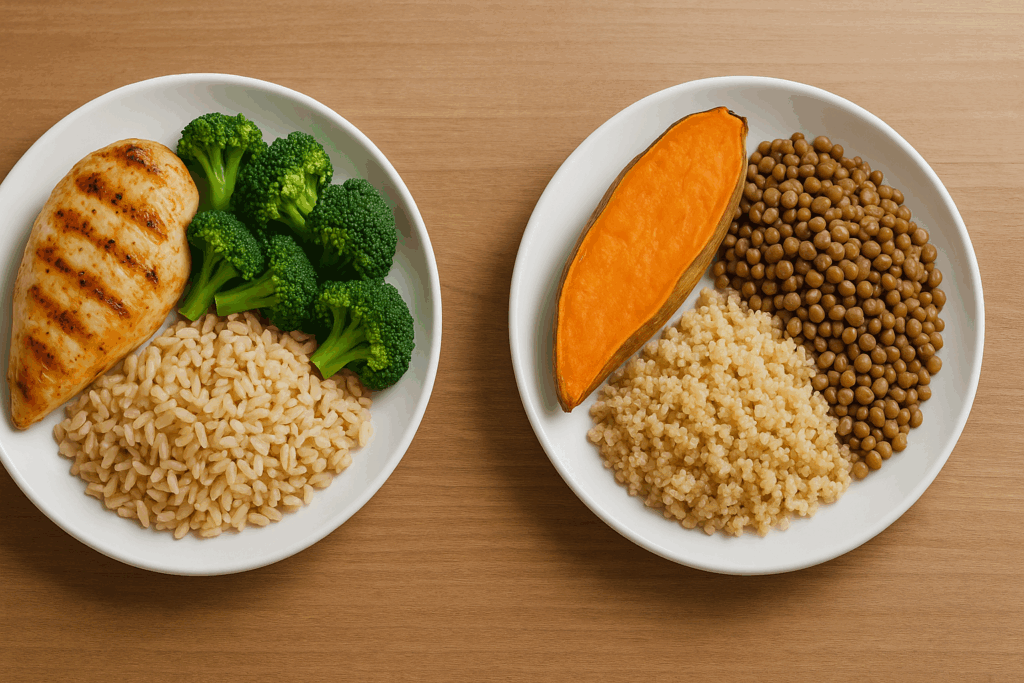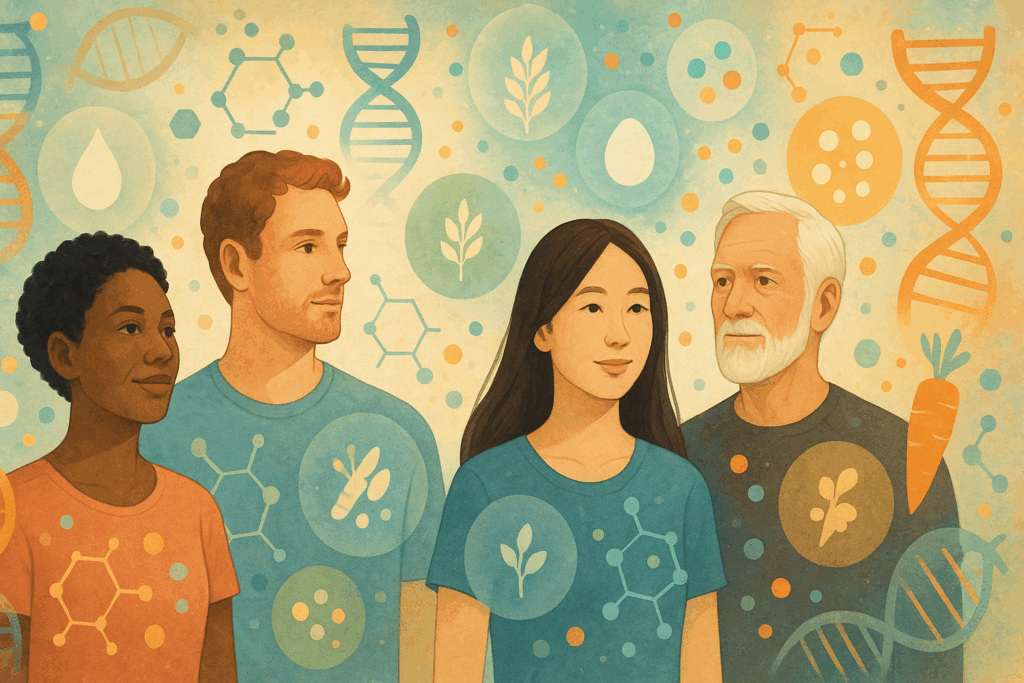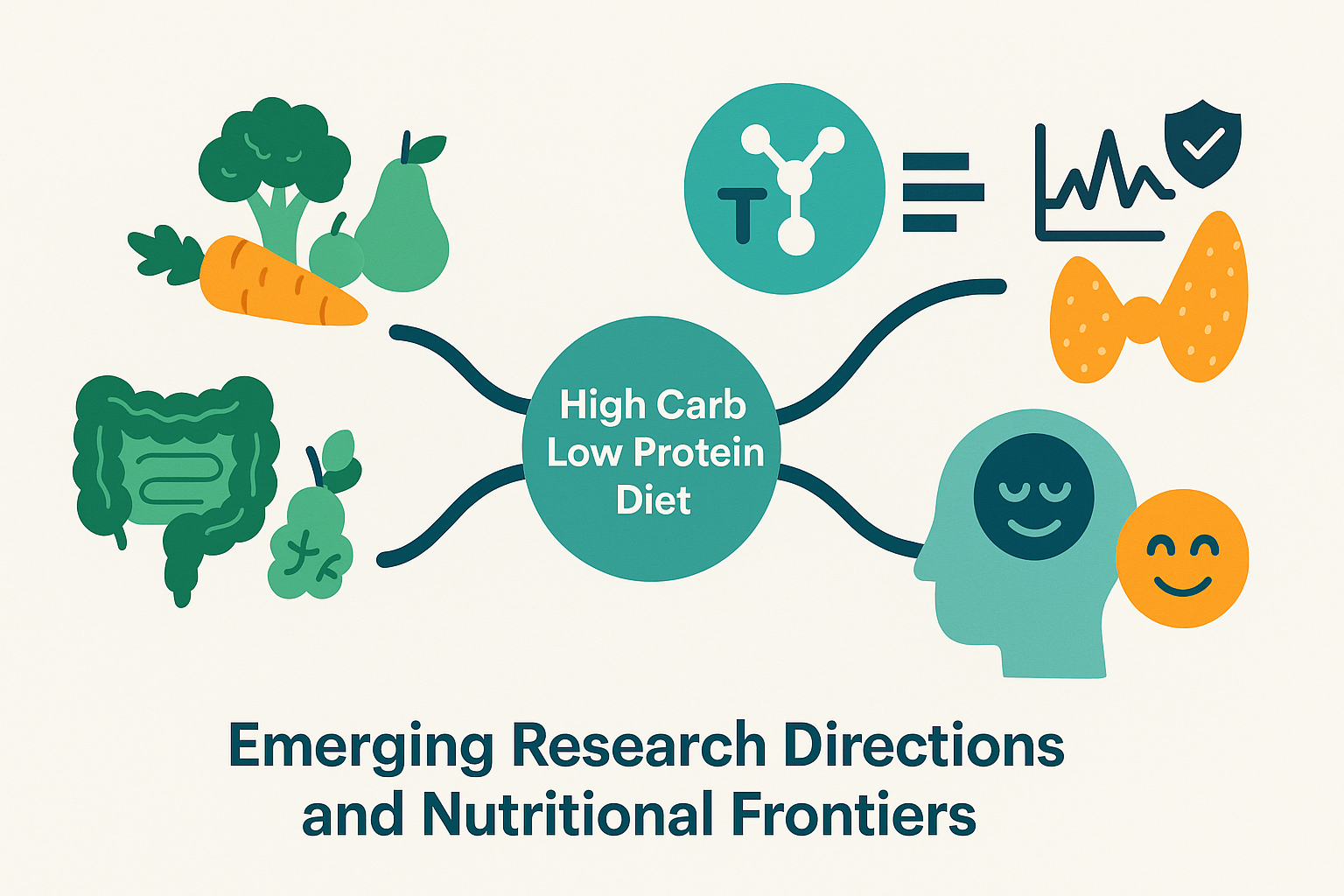In the ongoing debate about optimal nutrition, the focus has often swung between low-carb and high-protein trends, leaving little room for alternative dietary frameworks. However, emerging research and nutritional discourse have drawn attention to a seemingly controversial model: the high carb low protein diet. Often misunderstood or misrepresented, this dietary approach challenges long-standing assumptions about macronutrient balance and its relationship with health, fitness, and longevity. While many associate carbohydrates with weight gain and protein with lean muscle, the real story is far more nuanced. As the understanding of metabolic function and dietary biochemistry evolves, so too must our interpretations of what constitutes balanced nutrition. For those looking to optimize health outcomes, weight control, or performance, diving deeper into this subject reveals compelling, and at times surprising, truths.
You may also like : The Ultimate Guide to Choosing a High Protein Diet Name That Fits Your Goals

Understanding the High Carb Low Protein Diet: Foundations and Misconceptions
At its core, a high carb low protein diet emphasizes the majority of daily caloric intake coming from carbohydrates, with a reduced proportion dedicated to protein. This flies in the face of mainstream nutritional recommendations that prioritize high protein intake, especially for weight loss or athletic performance. Yet this structure is not inherently unhealthy. Many traditional diets across the globe—such as those consumed in rural Asia or parts of the Mediterranean—have long emphasized starchy vegetables, legumes, and grains over protein-heavy meals, with populations showing remarkable longevity and metabolic health.
One of the chief misconceptions about a high carb low protein diet is that it leads to poor muscle retention or metabolic inefficiency. While it’s true that protein plays a vital role in muscle synthesis, the body’s ability to adapt is substantial. If carbohydrate sources are rich in fiber, micronutrients, and phytochemicals—such as those found in sweet potatoes, lentils, oats, and fruits—then the nutritional foundation remains robust. Furthermore, not all protein must come from animal sources or be consumed in excess to maintain physiological function. Moderate protein, paired with high-quality carbs, may suffice for many lifestyle goals.
This model also aligns with diets designed for certain health conditions. Individuals with kidney disease, for example, are often recommended to limit protein intake to reduce renal burden. Similarly, some anti-aging researchers argue that reduced protein intake, particularly of certain amino acids like methionine, could influence longevity through modulation of cellular growth pathways. The challenge, then, is not in dismissing high carb low protein diets outright, but in understanding when and how they might be implemented effectively.

High Carb Low Protein Diets and Longevity: What the Science Suggests
The science of longevity has, in recent years, intersected heavily with nutritional science. One of the more provocative findings in this space comes from studies on calorie restriction and protein modulation in laboratory animals. Rodents on high carbohydrate, low protein diets—despite not being calorie-restricted—often live longer than those consuming higher protein regimens. These findings are frequently attributed to changes in the insulin/IGF-1 signaling pathways, which are deeply involved in aging and cellular regeneration.
In humans, the evidence is more nuanced, but still compelling. Populations with longer-than-average life expectancies, such as those in Okinawa, Japan, have traditionally followed diets that are high in complex carbohydrates and relatively low in animal protein. While many factors contribute to longevity—including genetics, lifestyle, and healthcare access—diet remains a significant pillar. The traditional Okinawan diet derives the bulk of its calories from sweet potatoes, with minimal red meat consumption and moderate fish intake. This high carb low protein paradigm aligns closely with recent discussions about reducing animal protein intake to mitigate risks of chronic diseases such as cardiovascular illness, cancer, and type 2 diabetes.
Moreover, research from the Blue Zones—regions with the highest proportion of centenarians—underscores the prevalence of high carbohydrate foods such as beans, whole grains, and tubers. These staples provide ample fiber, antioxidants, and slow-digesting starches that promote stable blood sugar and gut health, both of which are crucial for disease prevention and longevity. While the question of causation versus correlation still lingers, the patterns suggest a potential role for high carbohydrate, low protein diets in fostering long-term health.
Performance, Energy, and the High Carb Low Protein Trade-Off
One of the primary concerns around high carb low protein diets is their perceived inadequacy in supporting physical performance, especially in athletic or resistance training contexts. However, the truth is more layered. Carbohydrates are the body’s preferred fuel source for high-intensity exercise. During anaerobic activities such as sprinting or lifting weights, muscle glycogen—stored carbohydrate—is the primary energy source. Adequate carb intake ensures that these stores remain full, supporting optimal performance and reducing fatigue.
In contrast, excessive protein consumption does not translate directly into energy production, as amino acids are a less efficient fuel and primarily serve structural and enzymatic functions. In fact, diets overly skewed toward protein may strain metabolic pathways, particularly if carbohydrate intake is insufficient. For endurance athletes, especially those operating in the aerobic zone, carbohydrates are indispensable. A high carb low protein model—when executed with whole, unprocessed carb sources—can effectively support such activity without compromising performance.
That said, balance is critical. While protein is less emphasized in this model, it must not fall below critical thresholds necessary for recovery and immune function. Plant-based athletes, for example, often thrive on diets with ample legumes, grains, nuts, and seeds that provide moderate but sufficient protein along with high carbohydrate content. Such a pattern offers the dual benefit of fueling performance and supporting overall health, particularly when rounded out with nutrient-dense vegetables and healthy fats.

The Metabolic Impact of a High Carb Low Protein Approach
A diet high in carbohydrates and low in protein can have complex effects on metabolism, depending on the quality of the carbohydrates consumed. Whole food sources—like oats, lentils, brown rice, and fruit—digest slowly and promote steady insulin response. Conversely, diets high in refined sugars and low-quality starches may lead to insulin resistance, particularly in sedentary individuals. This distinction is critical in evaluating the long-term metabolic outcomes of such a diet.
Insulin sensitivity is a key marker of metabolic health. While low-carb diets often improve insulin sensitivity in the short term, especially in those with metabolic syndrome, high carbohydrate intake from whole foods has shown comparable or even superior effects in some populations. The high fiber content slows glucose absorption, improves gut microbiota diversity, and reduces systemic inflammation—all contributing to better insulin dynamics. In this light, the high carb low protein model need not be metabolically harmful, provided the carbohydrate sources are unrefined and balanced with adequate micronutrient intake.
Additionally, protein reduction can influence metabolic hormones such as IGF-1, which is associated with growth and aging. Lower IGF-1 levels are linked to reduced cancer risk and slower aging in some studies. However, this must be balanced with the risk of muscle loss, particularly in older adults, who require slightly more protein to preserve lean mass. The key lies in identifying individual needs and adjusting the macronutrient ratios accordingly.
High Carb Low Protein Diets in Clinical Contexts
Beyond general health and athletic performance, high carb low protein diets have important clinical applications. For patients with chronic kidney disease (CKD), protein restriction is often necessary to prevent the progression of renal damage. In such cases, a carefully structured diet rich in complex carbohydrates can provide energy without taxing the kidneys. This dietary strategy must be accompanied by close medical supervision to ensure that other nutrient needs—particularly for vitamins, minerals, and essential fatty acids—are met.
Similarly, in individuals undergoing cancer treatment or recovering from certain gastrointestinal surgeries, protein tolerance may be reduced. High carbohydrate, nutrient-dense foods like mashed sweet potatoes, bananas, and rice porridge offer gentle nutrition that supports recovery without overwhelming the digestive system. This model is also useful in refeeding protocols for malnourished patients or those with anorexia, where caloric density is needed but protein reintroduction must proceed cautiously.
High carb low protein diets have also been studied in the context of neurodegenerative diseases. Some evidence suggests that diets low in branched-chain amino acids (a component of high-protein diets) may reduce neuroinflammation and oxidative stress, potentially benefiting patients with Alzheimer’s or Parkinson’s disease. While research remains early-stage, the therapeutic potential warrants further exploration.

Examining the High Protein High Carbohydrate Diet: A Useful Comparison
To fully appreciate the high carb low protein model, it’s helpful to contrast it with its opposite: the high protein high carbohydrate diet. Popular among athletes and bodybuilders, this approach aims to maximize both muscle protein synthesis and glycogen replenishment. While it can be effective for those with intense training regimens, it may not suit everyone.
The high protein high carbohydrate diet often leads to high overall caloric intake, which, if not carefully monitored, can result in unintended weight gain. Furthermore, excessive protein intake—especially from animal sources—has been linked in some studies to increased cardiovascular and cancer risk. Balancing these concerns requires nuanced dietary planning and individualized assessment.
Additionally, protein metabolism generates nitrogenous waste, which must be excreted by the kidneys. In healthy individuals, this is usually not problematic, but it can become a concern in the long term, especially when coupled with dehydration or pre-existing renal issues. By comparison, a high carbohydrate and protein diet must be tailored to activity level and health status to be sustainable.
How to Structure a Balanced High Carbohydrate and Protein Diet
For those looking to achieve the benefits of both energy and muscle maintenance, a high carbohydrate and protein diet can be an effective compromise. This approach includes lean protein sources such as legumes, tofu, or fish, paired with ample servings of whole grains, fruits, and starchy vegetables. The key is not only the macronutrient ratios but also the nutrient density and timing of intake.
Combining carbohydrates with protein in meals supports muscle recovery and stable energy levels. For example, a post-workout meal consisting of quinoa and black beans offers both high-quality protein and slow-releasing carbohydrates. Adding leafy greens and avocado can further enhance nutrient density and satiety. Individuals must also remain mindful of portion sizes and total caloric intake to avoid metabolic imbalance.
This model aligns well with plant-forward eating patterns such as the Mediterranean or DASH diets, both of which emphasize diverse carbohydrate sources alongside moderate protein intake. These approaches support cardiovascular health, weight control, and cognitive function, illustrating that a high carbohydrate and protein diet, when thoughtfully composed, can meet a broad range of nutritional needs.
Common Pitfalls of a Low Protein and Carb Diet
While extremes in dietary models can sometimes be helpful for short-term intervention, the low protein and carb diet often falls short in both energy and nutrient adequacy. This pattern can lead to fatigue, muscle wasting, and impaired immune response. Since both carbohydrates and proteins are essential macronutrients, removing or severely limiting them poses risks that often outweigh potential benefits.
Such diets may be promoted under labels like detox plans or rapid weight loss regimens, but they frequently lack scientific support and can disrupt metabolic function. The absence of sufficient glucose and amino acids may impair neurotransmitter synthesis, reduce thyroid activity, and slow metabolic rate. Over time, this can contribute to hormonal imbalances and nutrient deficiencies.
Individuals drawn to these diets should critically evaluate the evidence and consider less restrictive approaches that still support their health goals. Incorporating balanced meals with appropriate portions of both carbohydrates and proteins ensures physiological resilience and long-term sustainability.

Genetic and Epigenetic Influences on Macronutrient Needs
One of the most fascinating areas of nutritional science is the role of genetics in determining optimal macronutrient ratios. Some individuals are genetically predisposed to metabolize carbohydrates more efficiently, while others may experience better health outcomes on diets with higher fat or protein content. Polymorphisms in genes related to insulin signaling, lipid metabolism, and satiety hormones such as FTO, APOA2, and TCF7L2 can influence how different people respond to high carb low protein diets.
For example, individuals with certain variants of the FTO gene may be more prone to weight gain on high-fat diets but fare better with high carbohydrate intake. Others may benefit from reduced protein consumption due to genetic markers linked to aging or cancer susceptibility. Epigenetic factors, such as those shaped by prenatal nutrition or environmental exposures, can also influence how one’s body processes macronutrients.
Understanding these nuances requires personalized nutrition strategies. Genetic testing and biomarker analysis can help determine which individuals might thrive on high carb low protein plans and which may need adjustments. As precision nutrition advances, it will become increasingly feasible to tailor macronutrient intake to one’s genetic profile, enhancing the efficacy of any dietary model.
Satiety, Cravings, and the Psychological Landscape of High Carb Diets
Satiety, or the sensation of fullness after eating, plays a crucial role in dietary adherence and weight management. High carb low protein diets often receive criticism for lacking satiety, but the reality depends largely on the types of carbohydrates included. Refined sugars and starches can lead to rapid spikes and crashes in blood glucose, promoting hunger and overeating. In contrast, fiber-rich carbohydrates like legumes, oats, and quinoa digest slowly and promote long-lasting satiety.
From a psychological standpoint, carbohydrates have a unique impact on mood and cognitive function. They increase the availability of tryptophan in the brain, which is a precursor to serotonin—a neurotransmitter associated with well-being and mood regulation. In individuals prone to stress or anxiety, a high carbohydrate meal may provide temporary emotional relief, though care must be taken to avoid dependency on food as a coping mechanism.
Additionally, the simplicity and familiarity of carbohydrate-based meals can enhance compliance. A bowl of warm rice and vegetables may offer both physiological nourishment and psychological comfort, especially when compared to the often restrictive and monotonous nature of high-protein diets. For individuals struggling with food aversions, eating disorders, or digestive sensitivities, a high carb low protein approach may offer a more sustainable path toward dietary normalization.
Sustainability and Ethical Implications of Macronutrient Choices
Beyond individual health, the macronutrient composition of our diets has profound implications for environmental sustainability. Animal-based proteins are among the most resource-intensive foods to produce, requiring significant land, water, and energy inputs while contributing to greenhouse gas emissions. Shifting toward a high carbohydrate model that emphasizes plant-based foods can reduce one’s ecological footprint.
Staple carbohydrate crops such as rice, potatoes, and legumes yield more calories per acre than animal agriculture and have lower environmental costs. Additionally, plant-forward high carb diets support biodiversity by encouraging the cultivation of a broader range of grains, vegetables, and pulses. In regions facing food insecurity or climate instability, such diets can play a role in promoting agricultural resilience.
Ethical considerations also come into play. Many individuals choose high carb low protein diets as a form of conscientious eating, aligning their food choices with values related to animal welfare or social justice. By reducing demand for meat and dairy, these dietary patterns can help alleviate the ethical concerns associated with industrial livestock farming.
When a Protein High Carb Model Makes the Most Sense
There are clear scenarios where a protein high carb diet is ideal. Young athletes, individuals recovering from surgery, and people seeking to gain lean muscle mass may benefit significantly from this model. The abundance of energy from carbohydrates fuels training and recovery, while increased protein supports tissue repair and growth.
This model is also useful in scenarios where appetite is suppressed, such as during periods of stress or illness. High carb foods tend to be more palatable and easier to consume, ensuring caloric needs are met, while protein enhances immune support. For example, a bowl of brown rice, tofu, and steamed vegetables offers a digestible, balanced meal rich in both energy and building blocks.
That said, it is crucial to avoid relying on refined or processed foods to meet carbohydrate needs. A protein high carb diet must still emphasize quality, incorporating nutrient-dense sources such as legumes, fruits, vegetables, and minimally processed grains. With this structure, it becomes a powerful tool for health optimization.

Emerging Research Directions and Nutritional Frontiers
The science of high carb low protein diets is rapidly evolving. Current research is exploring how these dietary patterns influence the gut microbiome, a critical determinant of metabolic and immune health. High fiber carbohydrates foster microbial diversity and production of short-chain fatty acids, which modulate inflammation and insulin sensitivity.
Another area of interest is the role of amino acid restriction in disease prevention. Methionine and leucine, two amino acids abundant in animal proteins, have been implicated in cancer proliferation and accelerated aging through activation of mTOR signaling. Diets that reduce these amino acids, while maintaining overall nutrient sufficiency, may support cellular repair and longevity.
Nutritional epidemiology is also examining the intersection of macronutrients with mental health. Preliminary findings suggest that high carbohydrate intake from whole foods is associated with lower rates of depression and anxiety. The mechanism is likely multifactorial, involving serotonin synthesis, microbiome modulation, and blood sugar stabilization.
Furthermore, plant-based versions of high carb low protein diets are being studied for their effects on hormonal balance, particularly in conditions like polycystic ovary syndrome (PCOS) and hypothyroidism. These findings may pave the way for tailored dietary interventions that harness the therapeutic potential of macronutrient manipulation.
Frequently Asked Questions About High Carb Low Protein Diets
1. Can a high carb low protein diet support hormonal balance?
Yes, a high carb low protein diet can positively influence hormonal regulation, especially in individuals with stress-related conditions or reproductive concerns. Carbohydrates help modulate cortisol levels, which are typically elevated during chronic stress, and promote the synthesis of serotonin by increasing brain uptake of tryptophan. This hormonal interplay can improve mood stability and sleep quality. Additionally, women with polycystic ovary syndrome (PCOS) may experience improved insulin sensitivity with a diet rich in complex carbohydrates and lower in protein, especially when it limits animal protein. Careful monitoring and inclusion of essential fats, such as those from flaxseeds or avocados, are crucial to ensure optimal hormonal outcomes alongside this dietary approach.
2. What role does a high carb low protein diet play in digestive health?
High carbohydrate diets rich in whole foods provide significant dietary fiber, which directly benefits gut health. A high carb low protein intake tends to reduce the load of protein fermentation in the colon, which can lead to the production of harmful metabolites when consumed in excess. Fiber-rich carbs promote beneficial bacteria like Bifidobacteria and Akkermansia, both linked to improved gut barrier integrity and reduced inflammation. Additionally, resistant starches in foods like green bananas and lentils act as prebiotics, nourishing the gut microbiome. This dietary pattern can be particularly helpful for individuals with irritable bowel syndrome (IBS) or dysbiosis when appropriately tailored to individual tolerance levels.
3. How does a high carbohydrate and protein diet compare in terms of energy sustainability?
A high carbohydrate and protein diet may offer short-term energy bursts due to its dual macronutrient availability, but energy sustainability over time depends on the type and quality of carbohydrates consumed. When the carbs are complex and the protein is lean and plant-based, this combination can provide sustained glucose release and satiety. However, excessive protein can increase thermogenic demand and nitrogenous waste, potentially leading to fatigue in some individuals. By contrast, a carefully planned high carb low protein diet emphasizes slow-digesting carbs and modest protein, delivering a more stable energy supply with less metabolic strain. For endurance athletes and manual laborers, a tailored protein high carb regimen might provide a more optimal balance.
4. What are some creative ways to incorporate a high carb low protein model in a plant-based diet?
Transitioning to a high carb low protein approach within a plant-based framework involves a focus on diverse, minimally processed whole foods. Staples such as millet, amaranth, plantains, and squashes can serve as satisfying carbohydrate bases. Pairing these with small amounts of lentils, edamame, or chia seeds provides just enough protein for functional needs without exceeding the diet’s intended ratio. Soups and stews featuring root vegetables and legumes in low-protein proportions allow for batch cooking and convenience. Fermented items like tempeh and miso, used sparingly, can also enhance flavor and gut health without overwhelming protein levels.
5. Is there a psychological advantage to choosing a high carb low protein diet?
There can be notable mental health benefits associated with high carb low protein diets, especially when carbohydrates are drawn from whole food sources. Carbohydrates stimulate serotonin production, which can lead to a calmer emotional state and better stress management. Individuals recovering from disordered eating often find high carbohydrate meals more comforting and less triggering than high protein regimens, which are sometimes associated with rigid dietary control. In contrast to high protein high carbohydrate diets that may emphasize performance and physique, a high carb low protein framework fosters mindfulness and connection with cultural eating patterns. This psychological shift often leads to more sustainable long-term eating behaviors.
6. Can a high protein high carbohydrate diet increase inflammation?
Emerging research suggests that a high protein high carbohydrate diet may exacerbate inflammation when the macronutrients are derived from processed or refined sources. High intake of red and processed meats, paired with sugars or white flours, can elevate markers like C-reactive protein (CRP). Conversely, when the same macronutrient structure is composed of legumes, whole grains, and moderate fish intake, the inflammatory response may be neutral or even reduced. This distinction underscores the importance of macronutrient quality rather than quantity alone. In contrast, many high carb low protein diets emphasize anti-inflammatory plant compounds and fiber, potentially offering more consistent reductions in systemic inflammation over time.
7. How does a low protein and carb diet compare nutritionally?
A low protein and carb diet is generally unsustainable and may lead to nutritional deficiencies unless meticulously planned. Such diets often overemphasize fat, which, while essential, cannot provide the same metabolic and structural functions as carbohydrates or proteins. Prolonged restriction of both macronutrients can result in loss of lean body mass, decreased thyroid function, and compromised cognitive performance. Additionally, individuals may experience a reduction in fiber intake, adversely affecting digestive health and cholesterol regulation. By contrast, both high carb low protein and high carb high protein diets, when well-constructed, offer greater dietary diversity and micronutrient density.
8. What future developments may influence high carb low protein dietary trends?
Future trends in high carb low protein diets are likely to be shaped by advances in precision nutrition, environmental science, and plant-based innovation. Wearable biosensors may soon allow users to track real-time blood glucose and amino acid levels, enabling more responsive macronutrient adjustments. On a sustainability front, increased awareness of agriculture’s environmental impact is driving demand for low-protein, high-yield crops that align with a high carbohydrate and protein diet or a strictly high carb low protein model. The development of functional foods, such as fortified whole grain snacks or legume-based pastas with controlled protein content, will enhance the practical application of these diets. These innovations may help tailor dietary frameworks that optimize health, ecological impact, and culinary satisfaction.
9. What’s the best approach for athletes using a protein high carb strategy?
Athletes often thrive on a protein high carb diet due to their higher caloric and recovery needs. However, success with this strategy hinges on nutrient timing and food quality. Pre-workout meals should prioritize simple carbs for rapid energy, while post-workout meals can combine complex carbs and complete proteins to support glycogen restoration and muscle repair. Including anti-inflammatory fats like omega-3s helps counteract exercise-induced oxidative stress. For endurance-focused athletes, alternating between high carb and protein loading and moderate protein phases may help periodize performance goals. Those looking for lean gains can also manipulate their carbohydrate type and volume to manage body composition while maximizing energy output.
10. How can a high carb and protein diet be personalized for metabolic flexibility?
Personalizing a high carb and protein diet involves assessing one’s metabolic rate, insulin sensitivity, and activity levels. Individuals with high insulin sensitivity may respond well to evenly distributed carbs throughout the day, while those with metabolic syndrome might benefit from carb backloading, consuming most carbohydrates around exercise windows. The inclusion of fiber-rich foods like quinoa, lentils, and fruits ensures glycemic stability and supports lipid metabolism. Protein quality also matters—opting for plant-forward sources reduces oxidative stress and supports cellular recovery. Unlike rigid protocols, flexible dietary structures incorporating metabolic biofeedback tools can adapt to physiological changes and evolving health needs, whether the user prefers a high carbohydrate and protein diet or trends toward a protein high carb ratio.
Conclusion: Making Informed Choices About High Carb Low Protein Diets
As the discussion around optimal nutrition continues to evolve, the high carb low protein diet challenges conventional wisdom and invites a deeper, more personalized approach to eating. While it may not be suitable for every context, its benefits in longevity, metabolic health, and specific clinical applications are too significant to ignore. By focusing on whole, nutrient-dense carbohydrate sources and maintaining adequate—though not excessive—protein intake, individuals can craft a dietary pattern that aligns with their health objectives, lifestyle, and physiological needs.
Ultimately, there is no one-size-fits-all diet. A thoughtful analysis of dietary patterns, grounded in scientific evidence and tailored to individual requirements, remains the cornerstone of balanced nutrition. Whether one leans toward a high carbohydrate and protein diet, a high protein high carbohydrate diet, or a high carb low protein approach, the goal should be long-term sustainability, functionality, and wellness. The surprising truth is that optimal health does not require extreme macronutrient manipulation, but rather a nuanced, informed understanding of what the body truly needs to thrive.
Further Reading:
Pros and Cons of a High-Carb Diet: Can You Lose Weight?





